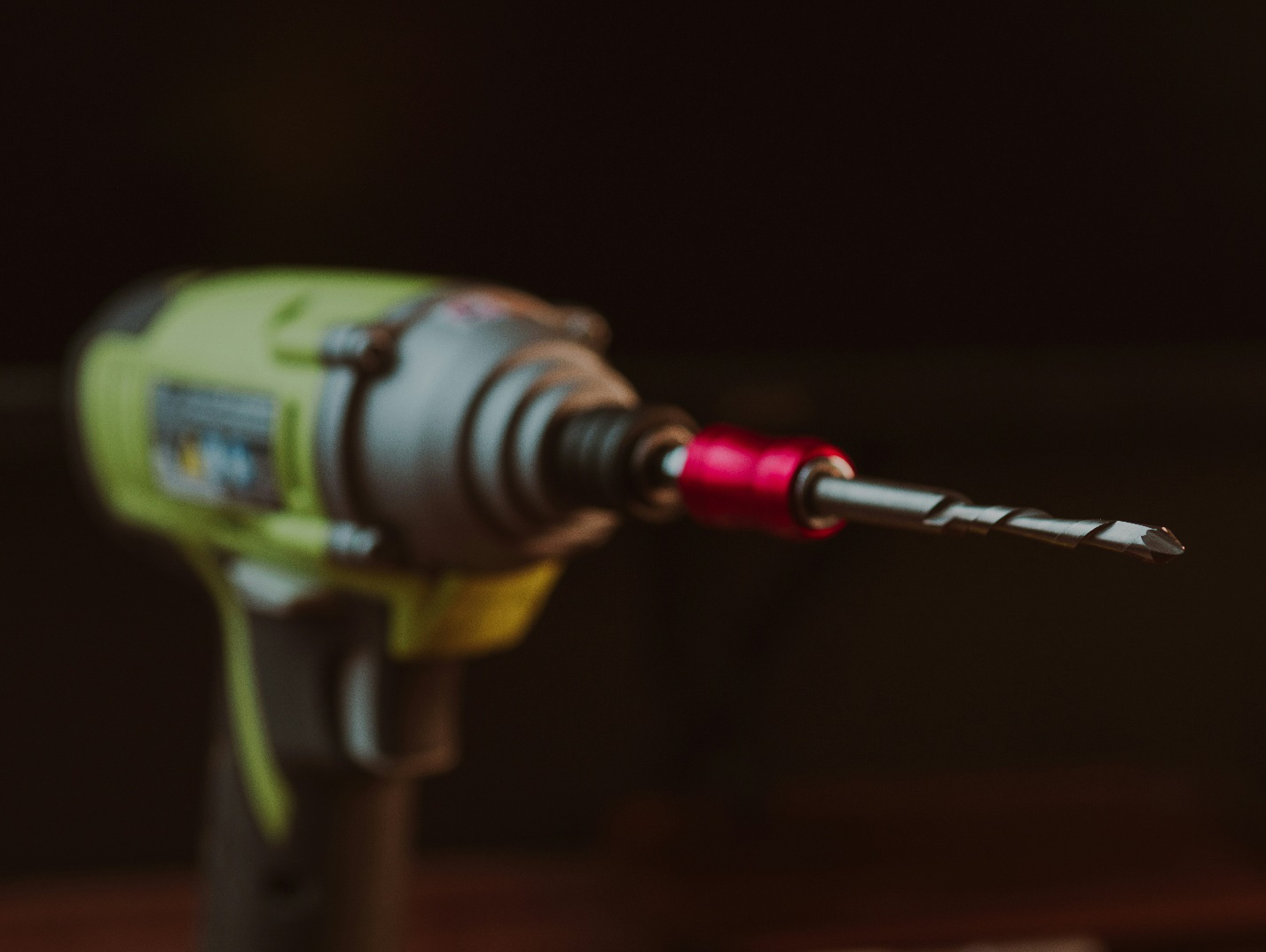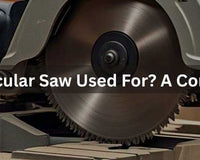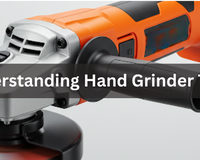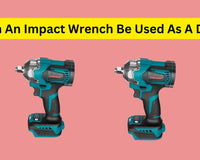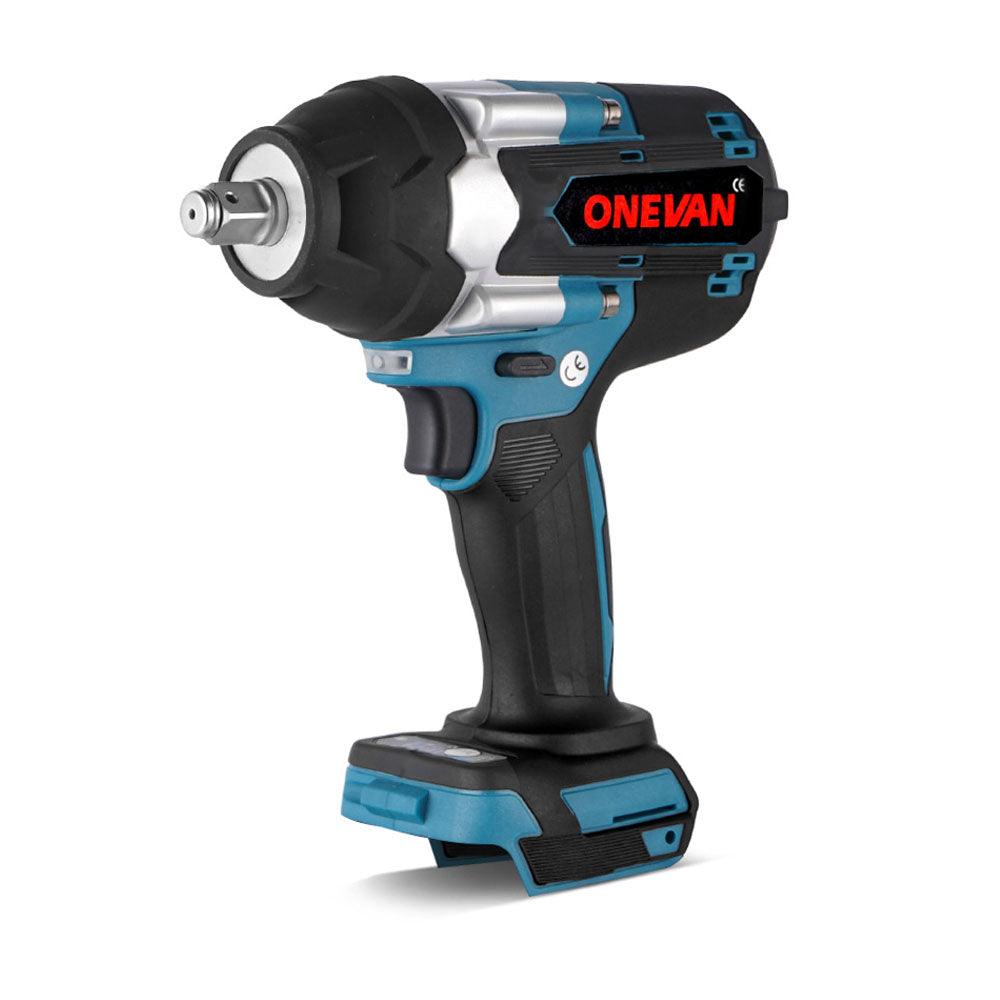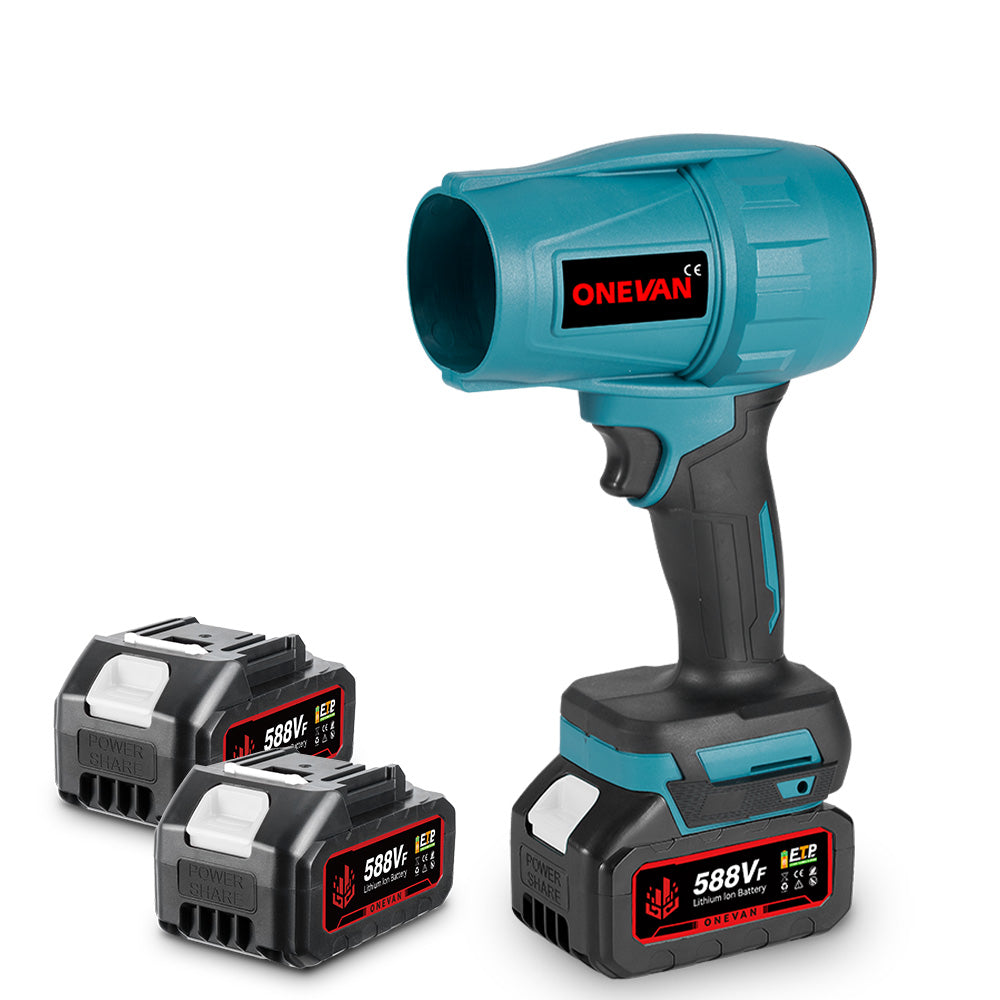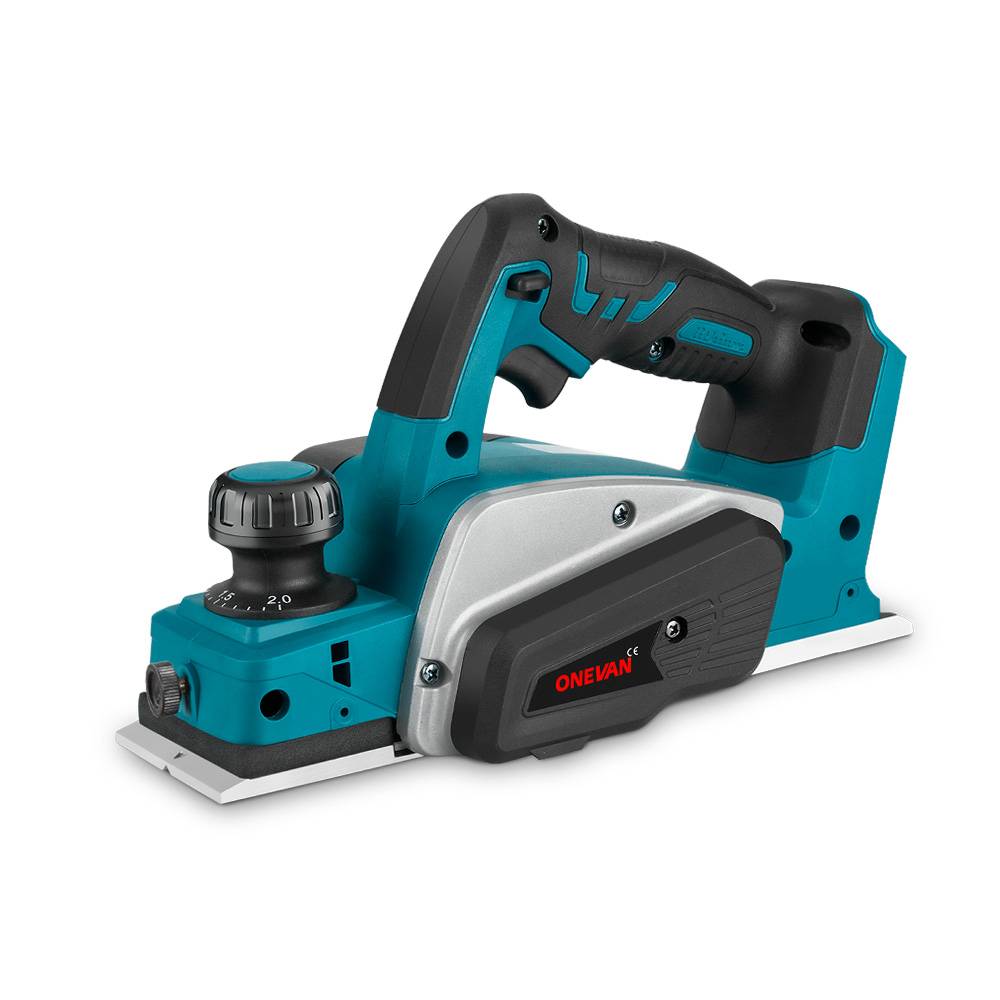Tener opciones similares al elegir herramientas eléctricas puede ser confuso y abrumador. Lo mismo ocurre con los taladros percutores eléctricos, los martillos eléctricos y los taladros eléctricos. Cada herramienta tiene una función específica, por lo que es fundamental elegir la adecuada para cada tarea.
Conocer las diferencias entre las herramientas al trabajar en proyectos de bricolaje o tareas profesionales puede ser beneficioso para elegir la más eficiente. La herramienta adecuada le ofrece el mejor resultado y le evita el dolor de cabeza de comprar herramientas adicionales.
En esta entrada del blog, hablaremos sobre las diferencias, ventajas y usos de los martillos eléctricos, taladros eléctricos y taladros percutores eléctricos. Al final de esta publicación, sabrás exactamente qué herramienta elegir para cada uso. ¡Comencemos!
1. ¿Qué es un taladro percutor eléctrico?
Un taladro percutor eléctrico es una herramienta potente para perforar materiales duros como piedra y mampostería. Posee un movimiento de percusión especial: un taladro giratorio con potentes golpes. Los golpes frecuentes, aunque no tan fuertes como los de un martillo demoledor, están diseñados para penetrar materiales duros con eficacia. Las brocas de los taladros percutores están diseñadas para resistir golpes y ruidos sordos durante el percutor. Por lo tanto, esta característica de la broca permite realizar trabajos de nivel industrial.
Características principales:
- Mecanismo de doble acción
- Producción de golpes rápidos de hasta 48000 BPM.
- Producción de torque y martilleo al mismo tiempo
- Muchos modelos permiten configuraciones de velocidad variables para adaptarse a diferentes materiales.
- Mango recubierto de material antideslizante.
- La velocidad estándar es de 50 revoluciones por minuto (rpm). Sin embargo, puede variar según el modelo hasta 3000 rpm.
- Se incluye un embrague de sobrecarga para proteger el taladro contra daños al desacoplar el motor si se detecta un torque excesivo.
- Las brocas a menudo presentan un diseño helicoidal que mejora la eficiencia de corte y ayuda a limpiar residuos durante la perforación.
Taladros percutores eléctricos con cable e inalámbricos
Los taladros percutores eléctricos pueden ser con o sin cable. Veamos en qué se diferencian.
Taladro percutor eléctrico con cable:
- Tienen energía constante mientras estén enchufados.
- Son mejores para tareas pesadas.
- Proporcionan mayor fuerza de perforación y mayor torque, lo que las hace ideales para perforar hormigón.
Taladro percutor eléctrico inalámbrico
- Se pueden llevar fácilmente a cualquier parte gracias a la ausencia de cables. Tampoco necesitan una toma de corriente.
- Sus diseños ergonómicos reducen la tensión en la mano y la muñeca del usuario, haciéndolos más cómodos de usar durante períodos prolongados.
- Son cómodos de utilizar en cualquier lugar.
- Necesitan reemplazo de baterías.
Visita el sitio web de ONEVAN para explorar su gama de taladros percutores. Puedes adquirir las siguientes variantes.
- Taladro percutor inalámbrico sin escobillas ONEVAN de 26 mm y 1680 W
- Taladro inalámbrico sin escobillas ONEVAN de 650 Nm y 13 mm con par de 20+3
- Taladro inalámbrico sin escobillas ONEVAN de 450 Nm y par de 25+3
- Taladro percutor eléctrico inalámbrico sin escobillas ONEVAN de 26 mm y 2000 W
- Taladro percutor multifuncional inalámbrico ONEVAN de 1000 W
- Martillo eléctrico inalámbrico sin escobillas ONEVAN de 20 V
Aplicaciones de los taladros de percusión eléctricos:
- Cincelado de baldosas.
- Perforando agujeros en el hormigón.
- Rompiendo asfalto y roca.
- Instalación de los estantes.
Ventajas de los taladros de percusión eléctricos:
Tienen una serie de ventajas que las hacen adecuadas para tareas pesadas como perforar agujeros en materiales muy duros.
- Pueden perforar agujeros fácilmente en materiales duros gracias a su mayor torque y fuerza de impacto.
- Se utilizan para diferentes propósitos como taladrar, cincelar, demoler, etc.
- Estos taladros son duraderos y duran mucho tiempo.
- Se necesita menos mantenimiento ya que utilizan motores y engranajes de alta calidad.
2. ¿Qué es un martillo eléctrico?
Es la herramienta utilizada para tareas pesadas como la demolición. Facilita la rotura de materiales duros como el hormigón y la mampostería. La fuerza de rotación y la fuerza de percusión son las dos características principales de los martillos eléctricos.
Tipos de martillos eléctricos
Martillos rotativos:
Se utilizan tanto para cincelar como para taladrar. Se emplean cuando se requiere una pequeña demolición y perforación de agujeros.
Martillos de demolición:
Estos son el tipo de martillos eléctricos que se utilizan para destruir paredes o estructuras de hormigón. Son útiles en trabajos de construcción, lo que incluye romper grandes piezas de material pesado.
Características principales:
- Fuerza de impacto alrededor de 1000-3000 golpes por minuto.
- Consumen más energía, especialmente para perforar materiales más duros.
- Alta relación potencia-peso.
- El tamaño del mandril de los martillos eléctricos varía según el modelo, y suele ir desde 6,35 mm (1/4 de pulgada) hasta tamaños mayores, llegando hasta 38 mm (1,5 pulgadas) en el caso de los martillos de demolición. Los martillos de demolición suelen tener mandriles más grandes, que van desde 25,4 mm (1 pulgada) hasta 38 mm (1,5 pulgadas).
- Capacidad de ranurado: El sistema SDS (Slotted Drive System) permite que el vástago de la broca encaje en el portabrocas. Esto facilita y agiliza el trabajo. La potente acción de percusión, junto con el SDS, permite realizar trabajos pesados sin interrupciones.
- Rotación reversible del taladro en ambos sentidos.
Martillos eléctricos con cable e inalámbricos
Los martillos eléctricos también pueden ser con cable o inalámbricos.
Martillo eléctrico con cable:
Son ideales para tareas pesadas que requieren potencia continua. Además, no hay que preocuparse por la batería agotada.
Martillo eléctrico inalámbrico:
Se utilizan en lugares remotos donde no hay suministro eléctrico directo. Es necesario llevar baterías adicionales. Son martillos eléctricos costosos.
Aplicaciones de los martillos eléctricos:
Los siguientes son los casos típicos en los que utilizamos martillos eléctricos.
- Perforación de agujeros grandes en mampostería para obras sanitarias o eléctricas.
- Demolición y cincelado de tejas y hormigón.
- Perforación de agujeros en superficies metálicas para fijación.
- Usos generales de martilleo y mezcla de materiales.
Ventajas de los martillos eléctricos:
- Los trabajadores tienen que esforzarse menos en los métodos de frenado manuales.
- La combinación de funciones rotatorias y de martilleo reduce el tiempo necesario para romper sustancias duras.
- Se pueden utilizar tanto para trabajos domésticos sencillos como para trabajos pesados de construcción.
Los martillos eléctricos se utilizan ampliamente en reformas y construcción gracias a su capacidad para perforar materiales resistentes con eficiencia. Pueden sustituir a los taladros convencionales si se equipan con las brocas adecuadas. Los taladros estándar son esenciales en cualquier kit de herramientas. La mayoría de los taladros eléctricos cuentan con motor y brocas intercambiables, lo que les permite realizar diversas tareas, como taladrar agujeros y atornillar.
3. ¿Qué es un taladro eléctrico?
Un motor giratorio acciona un taladro eléctrico. Esta herramienta permite perforar objetos como madera, plástico o cualquier superficie dura, y es muy común tanto en hogares como en obras de construcción.
Los tipos comunes de brocas que se utilizan con taladros eléctricos incluyen brocas de corona para cortar agujeros más grandes, brocas de punta de lanza para madera, brocas de mampostería para hormigón y brocas escalonadas para crear agujeros de varios diámetros en materiales delgados. Es fundamental seleccionar la forma, el tipo y el tamaño de broca adecuados según el material específico que se esté perforando, ya que cada material requiere brocas especializadas para un rendimiento óptimo.
Taladros eléctricos con cable e inalámbricos
Al igual que las otras dos herramientas que analizamos, los taladros eléctricos también pueden ser con cable o inalámbricos.
Taladros eléctricos con cable:
- Dependen de fuentes de energía continuas.
- Tienen ventajas funcionales, como interruptores de gatillo que giran el mandril.
- Fácil de transportar. No necesita pilas adicionales.
- Herramienta preferible para tareas grandes o pequeñas.
Taladros eléctricos inalámbricos:
- Funcionan con baterías de iones de litio recargables, que ofrecen un buen equilibrio entre potencia y longevidad.
- Se utiliza para taladrar agujeros y colocar tornillos.
- La mejor opción para proyectos al aire libre o en áreas remotas.
- Altamente portátil.
- Uso sin complicaciones en espacios reducidos debido a la ausencia de cables.
Aplicaciones de taladros eléctricos
- Perforar agujeros en metales, paredes, madera y plástico para diferentes propósitos.
- Atornillado
- Mezclando diferentes materiales
Ventajas de los taladros eléctricos
- Ahorran tiempo, ya que taladrar y atornillar manualmente lleva tiempo.
- Mínimo esfuerzo
- Muy fácil de usar (diseño fácil de usar)
- Inversión lógica única para varias tareas
4. Cómo elegir la herramienta adecuada: taladro percutor eléctrico vs. martillo eléctrico vs. taladro eléctrico
|
Característica |
Taladro percutor eléctrico |
Martillo eléctrico |
Taladro eléctrico |
|
Fuente de energía |
Con o sin cable |
Con o sin cable |
Con o sin cable |
|
Uso principal |
Perforación en materiales duros |
Cincelado y demolición |
Perforación y atornillado de tornillos en diferentes materiales |
|
Modos de función |
Rotatorio y martilleo |
Martillar con impacto |
Rotary con un poco de impacto |
|
Materiales adecuados |
Hormigón, mampostería, piedra |
Hormigón, piedra, ladrillo, mampostería |
Madera, plástico, metal. |
|
Rango de potencia |
600W-2000W |
800W-2000W |
300W-1000W |
|
Control de velocidad |
Configuraciones variables |
Configuraciones variables pero mayoritariamente fijas |
Configuraciones variables |
|
Energía de impacto |
Alto (normalmente oscila entre 1,5 y 5,0 julios) |
Muy alta (1,5 julios a más de 10 julios) |
Baja (normalmente menos de 1 julio) |
|
Tamaño de mandril común |
SDS Plus o SDS max (10-18 mm) |
SDS Max (18 mm o más grande) |
Con o sin llave (7 mm, 10 mm o 13 mm) |
|
Peso y portabilidad |
De regular a pesado; no tan portátil como los taladros eléctricos simples |
Pesado; no se puede llevar a todas partes |
Ligero; se puede llevar prácticamente a cualquier lugar. |
|
Nivel de ruido |
Alto |
Muy alto |
Moderado |
|
Características adicionales |
Cambios de broca más rápidos, gestión de vibraciones, extracción de polvo |
Gestión de vibraciones (funciones antivibración) |
Portabrocas sin llave, opciones de fijación |
|
Gama de precios |
$100 - $450 |
$150 - $600 |
$40 - $350 |
|
Requisitos de mantenimiento |
Lubricación, limpieza y mantenimiento de piezas necesarias periódicamente. |
Lubricación, limpieza y mantenimiento de piezas necesarias periódicamente. |
Bajo mantenimiento |
|
Usuario típico |
Bricoladores, personal de construcción |
Personal y profesionales de demolición y construcción |
Aficionados al bricolaje, propietarios de viviendas |
5. Conclusión
Elegir entre diferentes herramientas puede ser abrumador. Las diferentes características de los taladros percutores, martillos eléctricos y taladros eléctricos le ayudan a elegir la herramienta adecuada más rápidamente. Comprender las diferencias entre los tipos de taladro y sus componentes, en particular las formas y tamaños de las brocas y los mandriles, es crucial para seleccionar la herramienta más eficaz para sus tareas específicas.
Un taladro percutor eléctrico ofrece movimiento rotatorio con acción de percusión. Por eso es adecuado tanto para aficionados al bricolaje como para expertos. Los martillos eléctricos vienen con piezas y brocas más grandes. Se suelen utilizar para trabajos pesados como demolición y cincelado de materiales duros. Un taladro eléctrico de uso general es una herramienta portátil para que tanto aficionados al bricolaje como aficionados al bricolaje realicen tareas de taladrado y atornillado en casa.
Seleccionar la herramienta adecuada para su tarea específica es crucial para maximizar la eficiencia y lograr resultados exitosos. Identifique el material con el que trabaja y la tarea que debe realizar. La herramienta adecuada puede influir significativamente en la eficiencia, la seguridad y los excelentes resultados de su trabajo.
6. Preguntas frecuentes
¿Se puede utilizar un taladro percutor eléctrico como un taladro normal?
Sí, puedes usar un taladro percutor eléctrico como si fuera un taladro convencional. Para ello, debes desactivar el percutor.
¿Se puede utilizar un taladro eléctrico normal para perforar hormigón?
Puedes, pero no se recomienda usar un taladro eléctrico convencional para hormigón, ya que carece de la fuerza de percusión y el par necesarios para penetrar eficazmente en materiales duros. Sería útil usar un taladro percutor o rotatorio para este propósito.
¿Cuáles son los diferentes tipos de martillos eléctricos?
Los dos tipos principales son los martillos rotativos y los martillos demoledores. Ambos pueden ser inalámbricos o con cable.
¿Puedo utilizar un taladro percutor eléctrico para cincelar hormigón?
Sí, se puede usar un taladro percutor eléctrico para cincelar hormigón. Debe usar la broca de cincel adecuada.
¿Cuál es la vida útil de una batería de taladro típica?
La vida útil promedio de una batería de taladro es de aproximadamente 3 a 5 años. Esto depende del tipo de batería, la frecuencia de uso y el mantenimiento adecuado.

